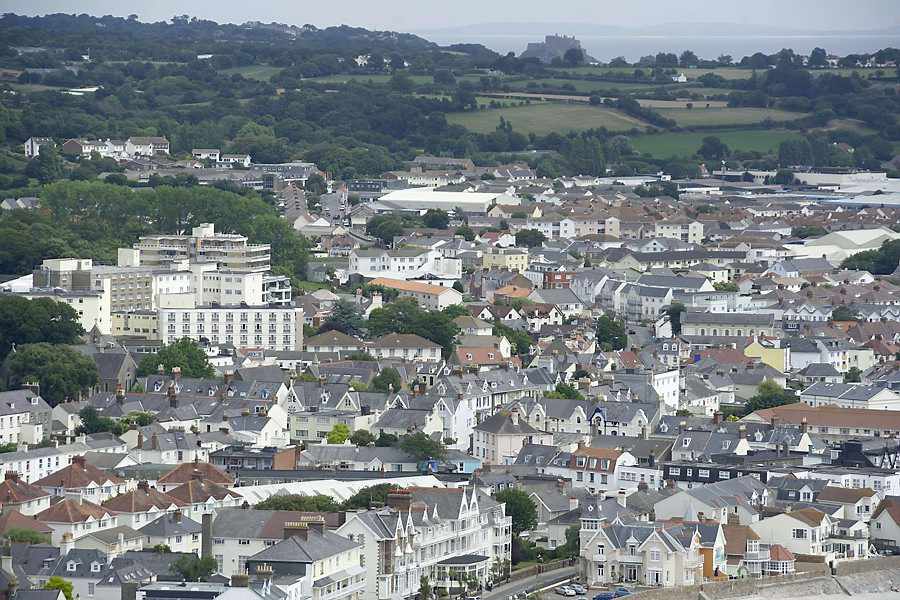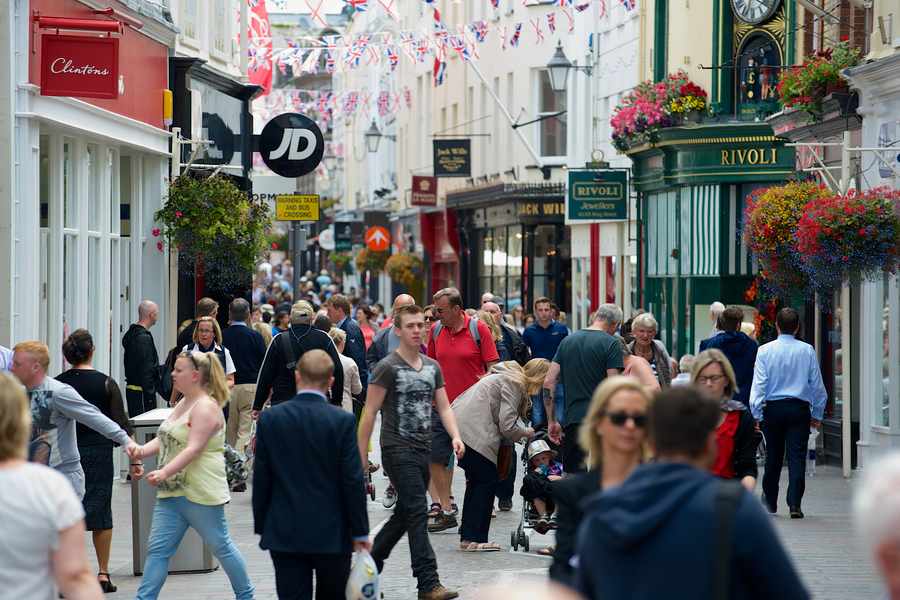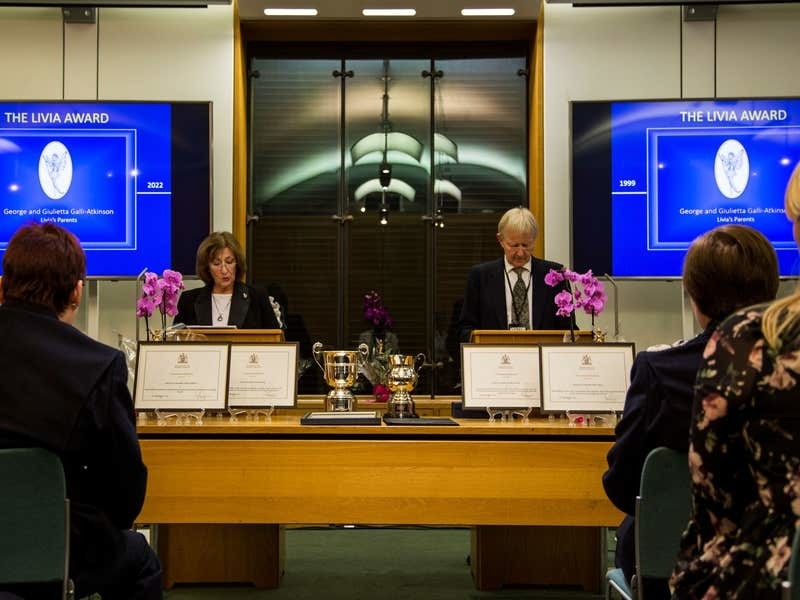- States priorities for next four years revealed.
- Population, health, education, and improving St Helier among key prioroties.
MINISTERS have bowed to political pressure and included population at the heart of a plan that will set States policy for the next four years.
The Council of Ministers yesterday lodged their Strategic Plan with the States and proposed that health, education, economic growth and improving St Helier are made key government priorities.
- Each new Council of Ministers is required by law to lodge a statement of strategic policy for their term of office within four months of their appointment.
- In it, Ministers publish their proposed priorities, which they then asked the public for their view on between 27 January and 27 February. They have then taken these comments into account before publishing their draft strategic policy
- Publishing their strategic priorities for 2015 to 2018, Ministers said that ‘Jersey, like many jurisdictions, is facing significant economic, social and environmental changes, and its income is rising at a slower rate than in the past’. They said that while ‘continuing to provide essential services’, they had highlighted a number of issues they want to focus on ‘to ensure Jersey adapts to a fast-changing world’.
- The aim of the Strategic Plan is to sets the ‘overall direction’ for Jersey, concentrating on long-term policy aims and priorities. After debate in the States Assembly, these aims and priorities will then be translated into departmental objectives through the business planning process.
And although those proposed priorities have not changed since being unveiled in January and then consulted upon, a section on how those areas link to managing population growth has been added.
When ministers first revealed their strategic priorities they were silent on immigration matters, which led to criticism from backbenchers.
However now the plan says that the priorities proposed will provide Jersey with the levers it needs to manage ‘realistic’ population growth, which includes allowing inward migration to support the economy.
Still missing from the document, however, are details about how the priorities will be funded.
Instead ministers say that some figures will be available ahead of the plan being debated in April and final details will be published as part of the next Medium Term Financial Plan, which sets States spending, at the end of June.
The report accompanying the proposed plan says: ‘The council’s four priorities provide the necessary population policy levers for the future.
‘We must explore the potential contribution that each can make and set realistic but stretching targets that will help us shape our own destiny. Only then can we consider the cumulative impact of these interventions and the supplementary role that inward migration must play in helping creating a sustainable future for our Island.
‘We must also be realistic. Inward migration has a key role to play in Jersey’s future. Employers will always need staff with skills, market knowledge and experience that is not immediately available locally.
‘Our policy must continue to focus on migration which adds the greatest economic and social value, and only where local talent is not available.’
The plan also states: ‘Each of the four priorities has also been chosen because it plays a pivotal role in addressing two of Jersey’s other key challenges – promoting social inclusion and managing population growth.
‘If we are to limit population growth, we have to invest in education and productivity. If we are to attract skilled people to the Island and enhance quality of life for Islanders, we need to protect our countryside and improve our town. If we are to promote social inclusion, we must invest in health, education and improved housing. These solutions require a coherent, collective approach and that is what our priorities will deliver.’
Every new Council of Ministers is given four months to propose its Strategic Plan, which can then be amended by the rest of the House. The latest plan is due to be debated on 28 April. If approved it will then be used to shape government policy for the next four years.

- In January the JEP reported that Jersey’s population may have topped 100,000.
- Projections based on previous trends suggest that the population could now total at least 100,850 and may have risen to 101,000.
- However, the States Statistics Unit was unable to produce its annual population update last year because of systems problems following the introduction of the new Control of Housing and Work Law, which meant that the data used for the calculations were not available.
- The last time that Jerseys resident population was assessed by the statisticians was at the end of 2012, when it was estimated to number 99,000 people an increase of 900 on 2011.
- The unit also published a population projection report in September 2013 which forecast a 2015 population of 100,900, given a net inward migration of 325 people a year the target agreed last year as part of the States two-year interim population policy.
- Both of those statistical reports are based on the last full census, which was carried out in 2011 when the total resident population was 97,857.

Health and Wellbeing
- Ministers will focus on finding savings in the public sector to help safeguard investment in health care and funding proposals will be published with the draft Strategic Plan in March.
- Work continues to review the options for a new hospital, to find the best compromise between providing a future-proof solution and being economical with taxpayers money.
Education
- Our economy is globally competitive and needs a highly skilled workforce so ministers will be focusing on standards and skills.
- Stronger links between schools and businesses are being established so head teachers have more autonomy to lead creatively and inspire their students, so young people leave school with an understanding of the world of employment, a good grasp of technology and a ready for work approach.
Economic Growth
- The government intends to help meet the rising costs of health care through economic growth.
- Ministers will create the right conditions to foster economic growth, to support increased productivity in all parts of the economy and to encourage new business start-ups across different sectors.
- Ministers will stimulate inward investment and enterprise, putting a greater emphasis on innovation and technology. Fintech – the use of technology in financial organisations – is one area with significant growth opportunities.
- In financial services, ministers will build on the partnership between government, industry and regulator to protect existing markets and products, develop new ones, and promote our services to new markets overseas.
St Helier
- St Helier is the engine of our economy, where most of us work, live or socialise. Ministers want to rejuvenate St Helier so it becomes a modern, vibrant town that preserves the best of its history, accommodates high quality homes, shops and offices and provides great public amenities.
- A properly planned town can provide good quality homes and open spaces while protecting the coast and countryside from development.
- Ministers will work closely with the parish and residents to develop a new plan for St Helier, to incorporate the new finance centre, decent homes, parks, a distinctive retail centre and a clear transport plan. [/breakout]
WE now know the key priorities for Senator Ian Gorst’s Council of Ministers for the next three years.
They will be focusing on health, education, breathing new life into St Helier and achieving economic growth. Those are goals which Islanders can sign up to in the same way that everyone wants sunnier weather and lower taxation.
We support the ‘what’, but what we really need is the ‘how’ – how are are we going to afford all that when the government is faced with having to cut public spending by between £50 million and £100 million by 2020?
Personal tax revenue is down and, although there are many signs that the economy may be recovering, the longed-for surge in growth in finance and in other sectors has yet to materialise.
Yesterday’s statement is like being told you are going get a fabulous new house, but without being told the price, the repayment terms, the quality of the fixtures and fittings or whether you are going to get a pay rise to afford the mortgage.
The detail will come. The Resource Plan, which will give key high-level figures, is published in March, followed by the Medium-Term Financial Plan in July, which will provide the all-important breakdown of how departments will find savings, starting with £12 million this year.
In broad terms, ministers are going to follow a staged process. First they will look for savings and efficiencies combined with economic growth.
All departments are being asked to save two per cent except Health, which will have to cut its spending by one per cent.
If the first two measures fail to deliver, stage two would have to kick in – taxes would rise or the planned spending to improve health and education would have to be reviewed.
Ministers are hoping that their goals can be achieved without stepping outside stage one, without cutting front-line services.
But are Islanders – who have been through round after round of comprehensive spending review, wage freezes, cuts and tax rises – ready to make a huge leap of faith and buy into a plan which, as it stands today, is high on lofty aspiration and low on substance?
Ministers want us to believe that efficiency savings are not cuts. Time will tell.







